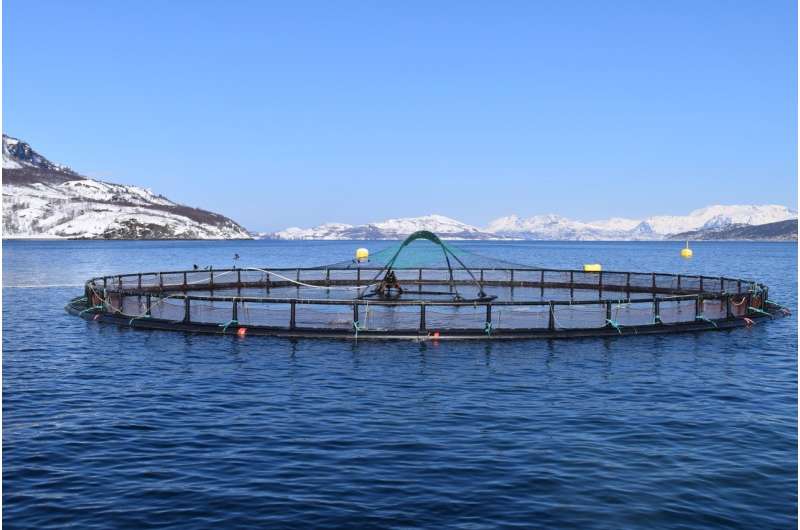New procedure for faster detection of environmental impacts from salmon farms

In order to meet the demands for salmon, many salmon farms have developed along the coasts of Scandinavia and Scotland. These operations are governed by strict environmental regulations. Farms are required to determine how their fish production is affecting the marine benthic ecosystem. Therefore, they analyse the presence of so-called bioindicator organisms such as crustaceans and worms on the sea floor. This process is time-consuming and expensive. Researchers at the University of Kaiserslautern together with colleagues from the University of Geneva are developing faster and more efficient methods. They utilize the DNA from microorganisms to characterise changes more precisely that was previously possible. Their studies have been published in the renowned journals Ecological Indicators and Marine Pollution Bulletin.
At more than 1.2 million tonnes annually, Norway is one of the largest salmon producers in the world. These fish are cultivated in large cages off the coast for approximately two years. The feed residues and fish excretions from these operations sink down to the sea floor and may affect the benthic ecosystem: bacteria break down these organic substances in a process that consumes oxygen. As a result, oxygen levels can drop low enough that most larger benthic organisms such as many worms, crustaceans or sea urchins are not able to survive these low-oxygen conditions.
For this reason, environmental authorities have imposed strict regulations for salmon farms. "Water exchange from ocean currents must be sufficient to supply the fish with oxygen and carry away as much as possible of the organic waste," notes Professor Dr. Thorsten Stoeck, an ecologist at the University of Kaiserslautern. "Moreover, environmental regulations allow only significant environmental impacts immediately beneath the fish cages. Within very short distance from the farm the environment needs to recover."
In order to test how the benthic ecosystem is impacted by farming activities, farmers must take samples from the ocean bottom. "The organisms living on the sea floor are indicators of ecosystem health," adds Dr. Stoeck. However, the process of species identification requires experts in taxonomy and is expensive and very time-consuming; it may take close to 6 months before results are in: too long for measures to be implemented if the ecosystem is severely stressed.
Stoeck's research team in collaboration with colleagues in Switerland (University of Geneva) is currently developing a simpler, more rapid and more cost-efficient method in their laboratories on the Kaiserslautern campus. The researchers are gathering samples from farmers and isolating microorganisms such as ciliates and bacteria. The scientists use the DNA from these microbes for the procedure. "Their genetic material is like a fingerprint; it is unique to each individual," says the ecologist. "Results are available within just a week." These tiny animals make it possible to draw more accurate conclusions about the extent of pollution than conventional methods. "Many larger organisms are not able to survive low-oxygen conditions," notes Stoeck. "Microbes are typically more resistant. Many are able to tolerate different degrees of pollution and contaminants and can adapt more rapidly to changing conditions."
The goal of the project is to create a database with the DNA fingerprints of a wide range of microorganisms. "We can create a system of DNA barcodes, analogous to the barcodes used for food products at the grocery store," continues Stoeck, whose team is collecting sediment samples from fish farms all over the globe. "These barcodes will allow the farmers to quickly identify the state of health of the ecosystem in vicinity of the fish farms."
In the long term, for example, farmers may be able to use a DNA chip for an automated analysis of sediment samples directly on site. The collection of barcodes will give them up-to-date information about the condition of the ocean, allowing farmers to respond to problems more quickly. Current monitoring programs usually are looking only at environmental conditions prevailing before fish are placed in the cages and then at the peak of production.
Journal information: Marine Pollution Bulletin
Provided by Technische Universität Kaiserslautern



















